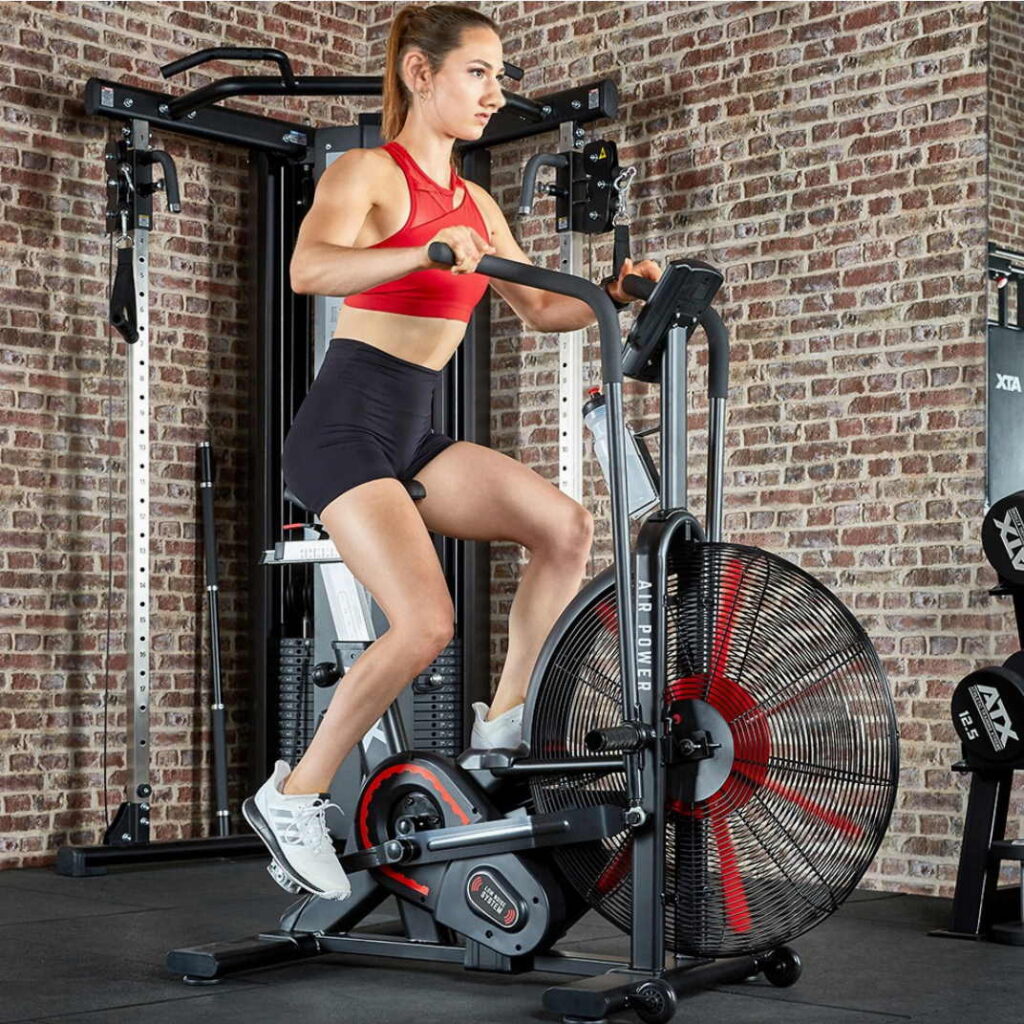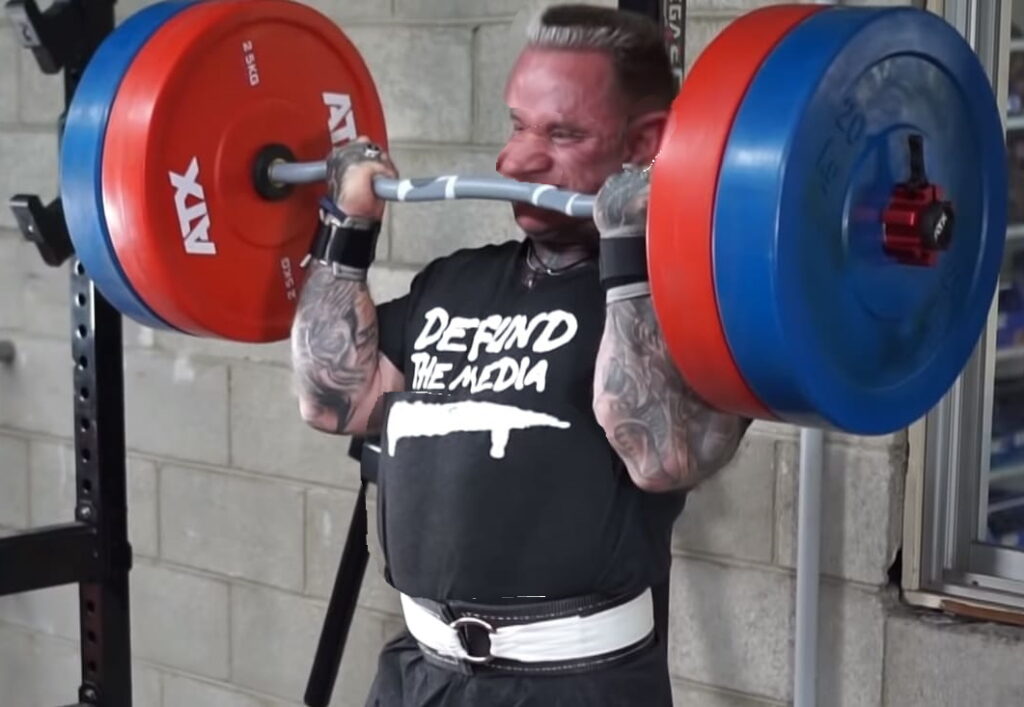Beginner Weight Training Tips
When you’re a complete beginner at lifting weights, the amount of information around can be overwhelming. Initially you might get confused by whether beginners should be training for strength or hypertrophy. Or which training program is best for beginners. So here are some simple beginner weight training tips to get you started.
Ultimately, a lot of your strength training journey will come down to preference – which training style you like the most. Plus how your body responds to different training styles, which you’ll learn with experience. But there are several fundamental training techniques which every weight lifter uses – no matter whether it’s a bodybuilder or a strongman.
Here is my list of things you should know before you start lifting weights.

Warm Up
No matter what exercises you’ll be doing; you should always warm up before the workout. It doesn’t have to be anything super fancy. Ideally you would spend 15 minutes prior to the workout doing some sort of cardio. If you have a bike or a treadmill just jump on one and get your heart rate up. If you don’t have access to one, simply go for a brisk walk until you break a light sweat.
Now with your blood flowing and joints being slightly looser you can start warming up the muscle group you want to train. You should always try your best to do dynamic stretches rather than static. This will prepare your body better for the movement.
After your dynamic stretches are done, you can move over to using just the barbell. The weight of just Olympic bars are just 20kg in most cases. This is enough weight to stretch your muscles, but not enough to be challenging. Try to crank out about 12-15 reps.

Take a short break of approximately 45-60 seconds, increase the weight and perform another 12-15 repetitions. As the weight increases, your reps should decrease until you hit your working sets. The heavier you go, the more warm up sets you will have to do.
Warm up sets are necessary, you should never walk straight into the gym and load up your working weight. The exact number of working sets and the weight you use will all depend on the individual. Once you’ve been training a little while you will know how many is best for you.
It is important to note that you shouldn’t count the warmup sets as your training sets.
Although the warmup can be the most boring part of the workout, it’s the most important. Spending 15 minutes warming up before your training is much better than spending 3 months nursing an injury. This is especially true for those who have sedentary jobs. Your body can’t rapidly adjust from being sat down at a desk to shifting heavy weight.
Recovery – The Limiting Factor
At the start of the training week you should be fully fit and ready to train hard. You should train with drive and intensity. But that does not mean that the harder you train the better results. If you train too hard you will find out your muscles do not fully recover.
By the time their third workout comes their body is completely exhausted. This is when they start reducing the weights, doing fewer sets and reps and skipping exercises.
This is one of the most important beginner weight training tips.
I was fortunate enough to be taught this lesson at a very early age when I was working at my grandfather’s farm. During both the planting and the harvesting season, we would get relatives who would come from the city to give us a hand.
He used to call them Single-Use workers as they always thought that they had limitless energy and did not have to pace themselves. Some of them would not even survive the first day of work. No one could replicate the pace the very next day as the muscle soreness would significantly reduce their output.

So whenever you’re training you should always have the next workout in mind. If you’ll be bench pressing twice in one week then don’t give it 100 percent on your first session as this will impact your next session.
It will also depend on how often you work out. Realistically, beginners should be working out three times per week. In theory this means you can train more intensely in those three sessions versus five sessions in a week. Training five sessions a week will mean less recovery time.
Diet
I feel like there is a lot of controversy surrounding the word Diet. Whenever most people hear this word they immediately start thinking about chicken, rice, broccoli and salads. In other words, endless amounts of tasteless, bland food.
The word diet refers to what you are consuming during the day, and not so much how clean or calorie and nutrient rich it is. The exact amount of food you will need to consume in the day will vary from person to person. It is called your basic metabolic rate. Each of us are quite unique and are living different lifestyles.
People are surprised to find out that you don’t have to eat salad for every meal to lose weight. This is the good old second law of thermodynamics. It means that as long as your caloric intake is under your basic metabolic rate, you will lose weight.
In theory you could eat chocolate for every meal and still lose weight. Providing the total amount of calories is under your basic metabolic rate. Although we wouldn’t recommend it if you’re concerned about your body composition or blood sugar levels. Similarly, you can eat salad for every meal and still gain weight – it’d have to be a metric ton of salad though.

For those who are struggling to get the calories in, or want to lose weight, I would recommend getting food scales. Chances are your meals are slightly too big and you are struggling to digest them in one sitting. If you have never used food scales before, you’ll be surprised at what 150 grams of chicken breast actually looks like!
You will only need to use them for the first few months of your training career. After this you will understand how many calories are in each and every meal. This will stop you overeating.
There is no such thing as a universal diet which would work for absolutely everyone.
You have to account for your lifestyle, Basal Metabolic Rate, your sleep patterns (you do burn a load of calories in your sleep) your goals, allergies and a million other factors.
You can try to find a simple diet online. Even better spend a few dollars and see a dietologist who could help you out with a basic diet to suit your body, lifestyle and goals. Another easy way to improve your diet is to gradually swap bad food for good food.
Each week drop some junk food and find something nutritious. This is an effective way to build sustainable eating habits. Crash diets can often be hard to maintain, and you can often find yourself lurching from one extreme to another.
Breathing
It might sound silly but a lot of people do not know how to breathe when training. If your breathing is off, you will end up not only increasing your heart rate to the point where you will not be able to perform the exercise correctly. Plus, you can also end up creating more lactic acid in your body which will further delay your recovery.
The easiest tip for beginner lifters when it comes to breathing is – breathe out during the harder part of movement. The part of the movement when you are doing the lifting.
Let’s take everyone’s favourite exercise- bicep curls. It is more difficult to lift the curl barbell up to your chest than it is to lower it down. Breathe out on your way up and breathe in when you are bringing the bar down to the starting position.
Keep an eye on your breathing during lateral pull down for back. Some people confuse the movements (bringing up and bringing down) in this exercise and start breathing in when they are pulling the bar down to their chest or shoulders.

Bracing
The term bracing refers to tensing your body during the lift. Take the same ez bar bicep curl as an example. If you don’t tense your core and glutes (by tensing I mean squeezing), your spine and your lower back will have very little support and will be more likely to move around.
The bracing of your body will help you to remain tight during the execution of the exercise, greatly reducing the likelihood of injury. Plus it will help you lift more weight.
Stretching
Everyone’s least favourite activity, but perhaps one of the most important ones. Stretching does wonders for your body. We’ve put stretching and warming up in different categories here because they are different.
Stretching involves static stretching movements to help your mobility, whereas warming up is more to do with dynamic movements to get the blood flowing to your muscles.
If you want good mobility then you should be doing other stretches on top of the stretches you do during your warm up.
Being mobile will allow you to have better posture, breathe better, sleep better, decrease the possibility of getting injured, increase the blood flow which will help you with recovery, and reduce or even eliminate back pain! (the list goes on and on).

Rest Between Sets
Unless you have specified rest times, rest instinctively between sets. If you feel ready to lift after 30 seconds of rest, go for it! If it takes you two minutes to recover, then take two minutes.
In the perfect world you would take longer rest breaks during compound movement (exercises where you will be activating multiple muscle groups) such as squats, bench press, deadlifts and shoulder press.
Accessory exercises (biceps curls, triceps extensions – movements which involve limited muscle groups) require less time to recover. My personal recommendation would be to rest somewhere between 45 seconds to a minute for these type of exercises.
A good rule of thumb is that when you’re lifting weights you should be sweating, but should never be out of breath. If you find yourself regularly getting out of breath while you’re lifting, then you need to take more rest between sets, or do sets with less repetitions.
